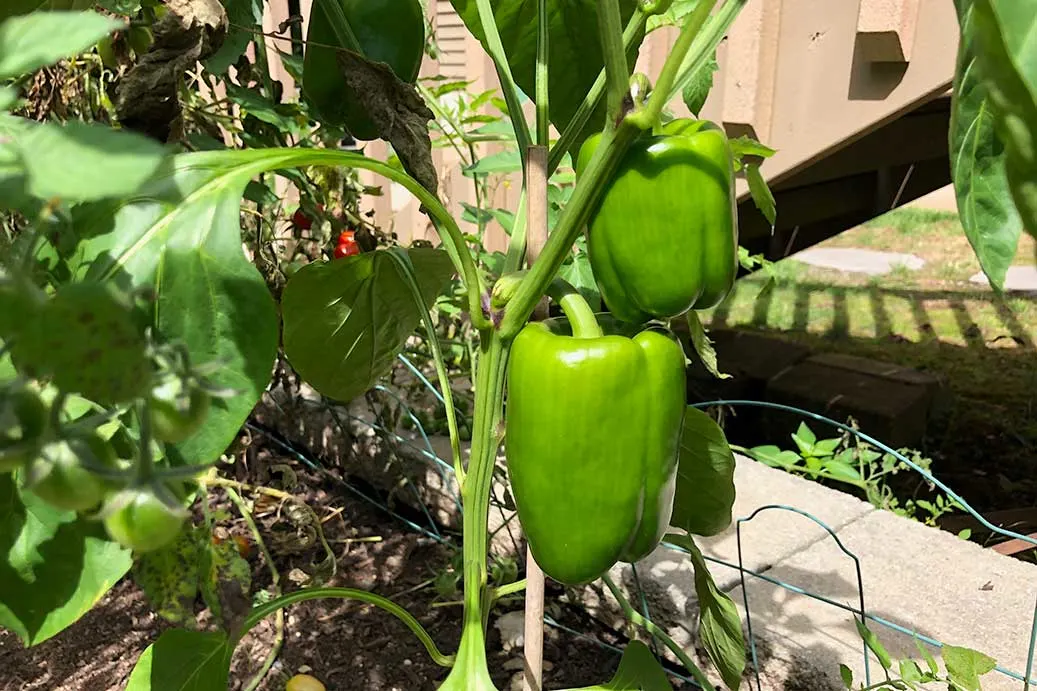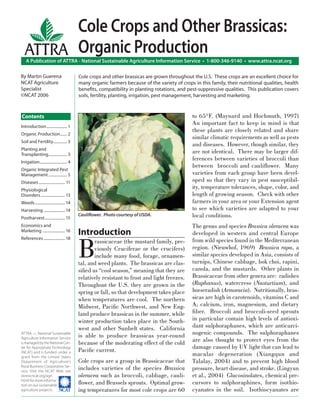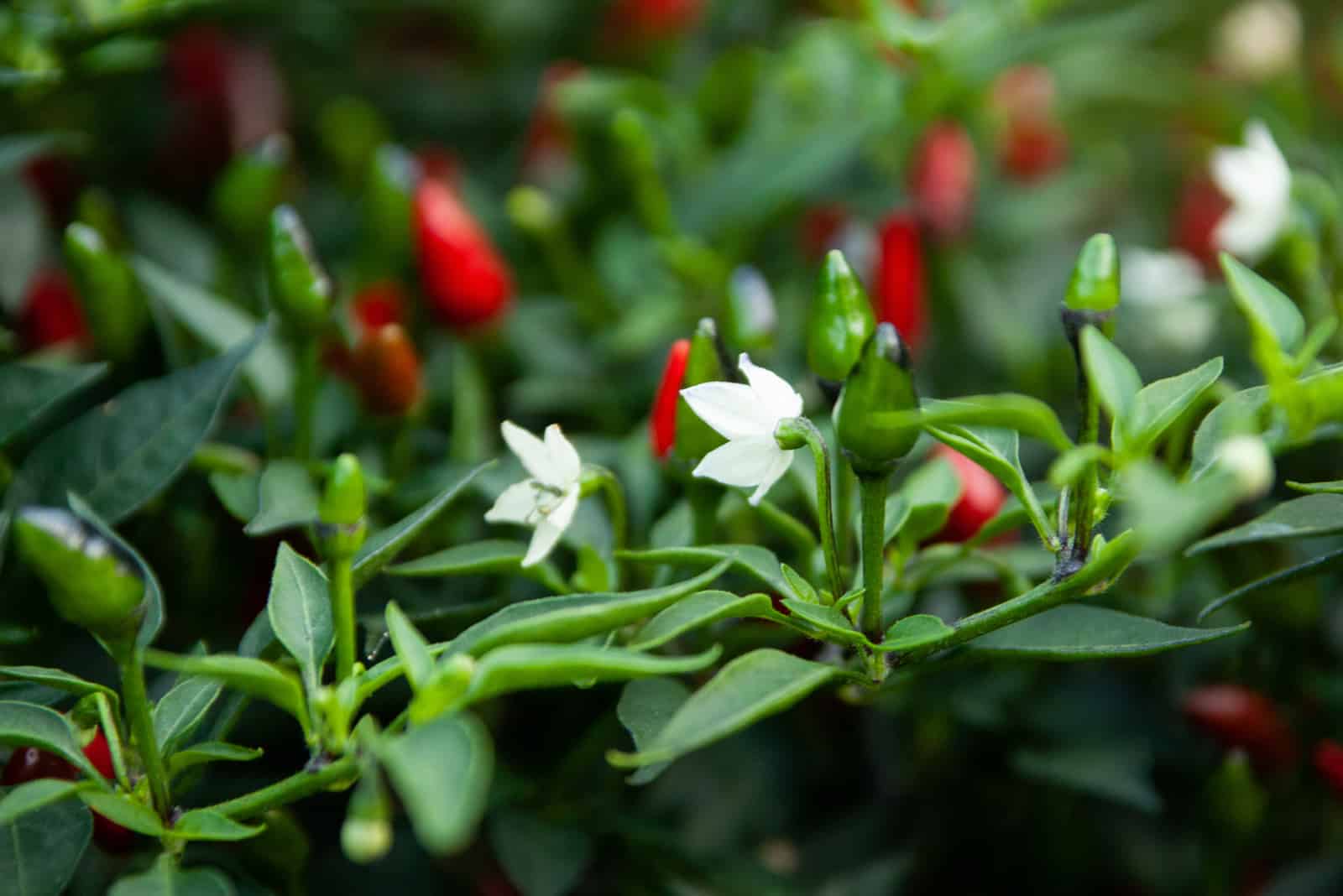Why Crop Rotation Matters for a Healthy Garden
Crop rotation is a fundamental principle of gardening that involves alternating the type of crops grown on a specific plot of land to maintain soil health, prevent pests and diseases, and promote biodiversity. When it comes to planting after peppers, crop rotation is crucial to avoid depleting the soil of essential nutrients and to reduce the risk of pests and diseases that can be harbored in the soil. By rotating crops, gardeners can create a balanced ecosystem that fosters healthy plant growth and minimizes the need for external inputs.
Soil health is a critical aspect of crop rotation. Different crops have varying nutrient requirements, and peppers, in particular, are heavy feeders that can deplete the soil of nutrients like nitrogen, phosphorus, and potassium. By planting a legume crop, such as beans or peas, after peppers, gardeners can replenish the soil’s nitrogen levels and improve its overall fertility. This approach not only reduces the need for synthetic fertilizers but also promotes a more sustainable gardening practice.
Crop rotation also helps to break disease and pest cycles that can be specific to certain crops. For example, peppers are susceptible to diseases like tobacco mosaic virus and bacterial leaf spot, which can be harbored in the soil and infect subsequent pepper crops. By rotating to a non-solanaceous crop, such as a brassica or a root vegetable, gardeners can reduce the risk of these diseases and create a healthier growing environment.
In addition to its practical benefits, crop rotation also promotes biodiversity in the garden. By growing a diverse range of crops, gardeners can attract a wider variety of beneficial insects, pollinators, and microorganisms that are essential for maintaining a healthy ecosystem. This approach not only enhances the overall health of the garden but also contributes to a more sustainable and environmentally friendly gardening practice.
When planning to plant after peppers, it’s essential to consider the specific needs and requirements of the subsequent crop. By choosing a crop that is well-suited to the soil and climate conditions, gardeners can create a thriving and resilient garden ecosystem that requires minimal external inputs. Whether you’re looking to plant a legume, a brassica, or a root vegetable, crop rotation is a simple yet effective way to maintain soil health, prevent pests and diseases, and promote biodiversity in your garden.
Understanding Pepper Plant Residue: What to Consider
When deciding what to plant after peppers, it’s essential to consider the residues left behind by the pepper plants. These residues can affect the soil and subsequent crops, and understanding their impact is crucial for maintaining a healthy and productive garden. One of the primary concerns is solanine, a compound produced by pepper plants as a defense mechanism against pests and diseases.
Solanine can remain in the soil for several weeks after the pepper plants have been removed, and it can be toxic to certain crops. For example, solanine can inhibit the growth of tomatoes, eggplants, and other members of the Solanaceae family. Additionally, solanine can also affect the soil’s microbial community, leading to changes in the soil’s structure and fertility.
Another compound produced by pepper plants is capsaicin, which can also remain in the soil after the plants have been removed. Capsaicin can affect the growth of certain crops, particularly those that are sensitive to its heat. However, capsaicin can also have beneficial effects on the soil, such as repelling pests and improving soil health.
When planting after peppers, it’s essential to consider the type of crop being planted and its sensitivity to solanine and capsaicin. For example, if planting a crop that is sensitive to solanine, it’s best to wait several weeks after the pepper plants have been removed to allow the solanine to break down. On the other hand, if planting a crop that is tolerant of capsaicin, such as a legume or a brassica, the residues left behind by the pepper plants can actually be beneficial.
Understanding the residues left behind by pepper plants is crucial for maintaining a healthy and productive garden. By considering the type of crop being planted and its sensitivity to solanine and capsaicin, gardeners can make informed decisions about what to plant after peppers and ensure a successful harvest.
How to Choose the Right Follow-Up Crops for Your Peppers
When deciding what to plant after peppers, it’s essential to consider several factors to ensure a successful harvest. The type of crop, soil type, climate, and desired harvest period are all critical factors to consider when selecting a follow-up crop. By choosing the right crop, gardeners can optimize their garden’s productivity and minimize the risk of pests and diseases.
Soil type is a crucial factor to consider when selecting a follow-up crop. For example, if the soil is heavy clay, it may be best to plant a crop that is tolerant of wet conditions, such as a brassica or a root vegetable. On the other hand, if the soil is sandy, a crop that is drought-tolerant, such as a legume or a herb, may be a better choice.
Climate is another important factor to consider when selecting a follow-up crop. In areas with a cool and wet climate, crops such as broccoli, kale, and carrots may thrive. In areas with a hot and dry climate, crops such as beans, peas, and herbs may be more suitable.
The desired harvest period is also an essential factor to consider when selecting a follow-up crop. If a quick harvest is desired, a crop such as radishes or lettuce may be a good choice. If a longer harvest period is desired, a crop such as beans or peas may be more suitable.
When considering what to plant after peppers, it’s also essential to think about the crop’s growth habits and requirements. For example, some crops, such as tomatoes and eggplants, are heavy feeders and may require additional fertilization. Other crops, such as legumes and herbs, may have different growth habits and requirements.
By considering these factors, gardeners can choose the right follow-up crop for their peppers and optimize their garden’s productivity. Whether you’re looking to plant a legume, a brassica, or a root vegetable, there are many options to choose from, and with the right selection, you can enjoy a bountiful harvest.
Legumes: A Natural Fit for Post-Pepper Planting
Legumes, such as beans and peas, are an excellent choice for planting after peppers. These crops are natural nitrogen-fixers, which means they have the ability to convert atmospheric nitrogen into a form that is usable by plants. This process not only benefits the legumes themselves but also improves the overall fertility of the soil, making it an ideal choice for what to plant after peppers.
Legumes are also relatively easy to grow and require minimal care. They are adaptable to a wide range of soil types and can thrive in a variety of climates. Additionally, legumes are a great choice for attracting beneficial insects and pollinators to the garden, which can help to improve the overall health and biodiversity of the ecosystem.
Some popular legumes for post-pepper planting include bush beans, pole beans, and peas. These crops are all relatively fast-growing and can be harvested in as little as 50-60 days. They are also excellent choices for container gardens or small spaces, making them a great option for gardeners with limited space.
When planting legumes after peppers, it’s essential to consider the specific growing requirements of the crop. For example, beans and peas prefer well-draining soil and full sun, while other legumes, such as lentils and chickpeas, may require more specific growing conditions.
Overall, legumes are an excellent choice for what to plant after peppers. They are easy to grow, improve soil fertility, and attract beneficial insects and pollinators to the garden. Whether you’re a seasoned gardener or just starting out, legumes are a great option for adding some diversity and nutrition to your post-pepper garden.
Brassicas and Other Cool-Season Crops: A Great Follow-Up Choice
Brassicas, such as broccoli, kale, and cauliflower, are an excellent choice for planting after peppers. These cool-season crops thrive in the same soil conditions as peppers and can help to improve soil health and structure. Additionally, brassicas are a great choice for attracting beneficial insects and pollinators to the garden, which can help to improve the overall health and biodiversity of the ecosystem.
Other cool-season crops, such as spinach, lettuce, and radishes, can also be planted after peppers. These crops prefer the cooler temperatures and can help to break disease and pest cycles that can be associated with peppers. They are also relatively fast-growing and can be harvested in as little as 20-30 days, making them an excellent choice for gardeners who want to get a quick start on their next crop.
When planting brassicas and other cool-season crops after peppers, it’s essential to consider the specific growing requirements of the crop. For example, broccoli and cauliflower prefer well-draining soil and full sun, while spinach and lettuce prefer partial shade and consistent moisture.
Brassicas and other cool-season crops are also an excellent choice for what to plant after peppers because they can help to improve soil fertility. Many of these crops, such as broccoli and kale, are heavy feeders and can help to deplete the soil of nutrients. However, they can also help to add organic matter to the soil, which can improve soil structure and fertility.
Overall, brassicas and other cool-season crops are an excellent choice for planting after peppers. They are easy to grow, can help to improve soil health and fertility, and can provide a quick and nutritious harvest. Whether you’re a seasoned gardener or just starting out, brassicas and other cool-season crops are a great option for adding some diversity and nutrition to your post-pepper garden.
Root Vegetables: A Low-Maintenance Option for After Peppers
Root vegetables, such as carrots, beets, and radishes, are a great option for planting after peppers. These crops are relatively low-maintenance and can thrive in a variety of soil conditions, making them an excellent choice for gardeners who want to minimize their workload.
One of the main advantages of planting root vegetables after peppers is their ease of growth. Most root vegetables require minimal soil preparation and can be direct-sown into the soil, making them a great option for gardeners who want to get a quick start on their next crop.
Another benefit of planting root vegetables after peppers is their ability to improve soil health. Many root vegetables, such as carrots and beets, have a deep taproot that can help to break up compacted soil and improve drainage. This can be especially beneficial for gardeners who have heavy clay or sandy soils that can be prone to compaction.
When planting root vegetables after peppers, it’s essential to consider the specific growing requirements of the crop. For example, carrots prefer well-draining soil and full sun, while beets prefer partial shade and consistent moisture.
Some popular root vegetables for planting after peppers include carrots, beets, radishes, and turnips. These crops are all relatively fast-growing and can be harvested in as little as 20-30 days, making them an excellent choice for gardeners who want to get a quick start on their next crop.
Overall, root vegetables are a great option for planting after peppers. They are easy to grow, can improve soil health, and can provide a quick and nutritious harvest. Whether you’re a seasoned gardener or just starting out, root vegetables are a great choice for adding some diversity and nutrition to your post-pepper garden.
Herbs and Flowers: Adding Diversity to Your Post-Pepper Garden
Herbs and flowers are a great way to add diversity to your post-pepper garden. Not only do they provide a pop of color and fragrance, but they can also help to attract pollinators and improve soil health. When deciding what to plant after peppers, consider adding some herbs and flowers to your garden plan.
Some popular herbs that can be planted after peppers include basil, cilantro, and dill. These herbs are all relatively easy to grow and can thrive in a variety of soil conditions. They can also help to repel pests and attract beneficial insects to the garden.
Flowers, such as marigolds and nasturtiums, can also be planted after peppers. These flowers are not only beautiful, but they can also help to attract pollinators and improve soil health. They can also help to repel pests and attract beneficial insects to the garden.
When planting herbs and flowers after peppers, it’s essential to consider the specific growing requirements of the crop. For example, basil prefers well-draining soil and full sun, while cilantro prefers partial shade and consistent moisture.
Some popular flower options for planting after peppers include marigolds, nasturtiums, and calendulas. These flowers are all relatively easy to grow and can thrive in a variety of soil conditions. They can also help to attract pollinators and improve soil health.
Overall, herbs and flowers are a great way to add diversity to your post-pepper garden. They can help to attract pollinators, improve soil health, and provide a pop of color and fragrance to the garden. Whether you’re a seasoned gardener or just starting out, herbs and flowers are a great choice for adding some diversity and nutrition to your post-pepper garden.
Sample Garden Plans: Putting it All Together
Now that we’ve discussed the importance of crop rotation and some of the best crops to follow peppers, let’s take a look at some sample garden plans that incorporate these principles. Here are a few examples of garden plans that you can use as a starting point for your own garden:
**Garden Plan 1: Legumes and Brassicas**
This garden plan features a rotation of legumes and brassicas after peppers. The plan includes:
- Peppers (spring and summer)
- Legumes (beans and peas) (late summer and fall)
- Brassicas (broccoli and kale) (early spring)
**Garden Plan 2: Root Vegetables and Herbs**
This garden plan features a rotation of root vegetables and herbs after peppers. The plan includes:
- Peppers (spring and summer)
- Root vegetables (carrots and beets) (late summer and fall)
- Herbs (basil and cilantro) (early spring)
**Garden Plan 3: Cool-Season Crops**
This garden plan features a rotation of cool-season crops after peppers. The plan includes:
- Peppers (spring and summer)
- Cool-season crops (lettuce and spinach) (late summer and fall)
- Brassicas (broccoli and kale) (early spring)
These are just a few examples of garden plans that you can use as a starting point for your own garden. Remember to consider your specific climate, soil type, and desired harvest period when selecting crops to follow peppers.








